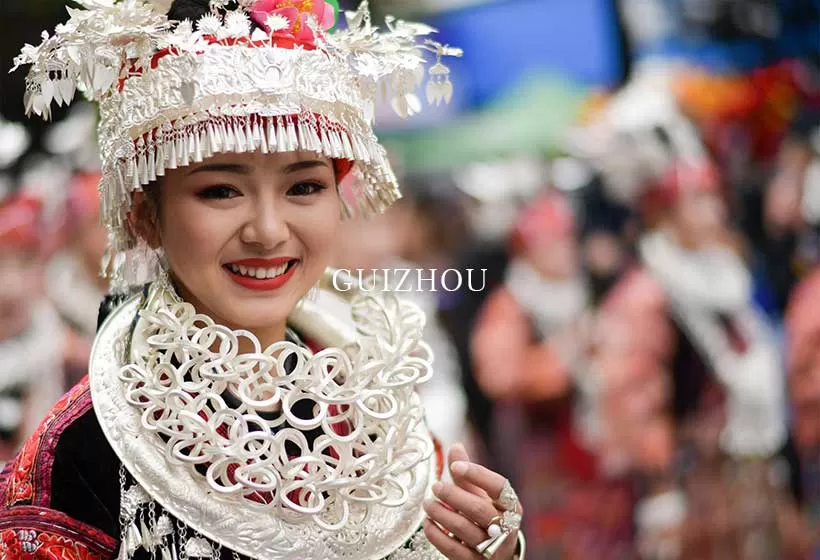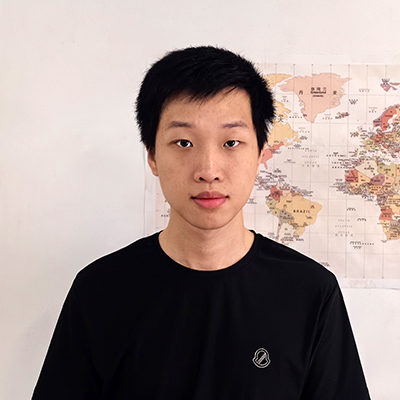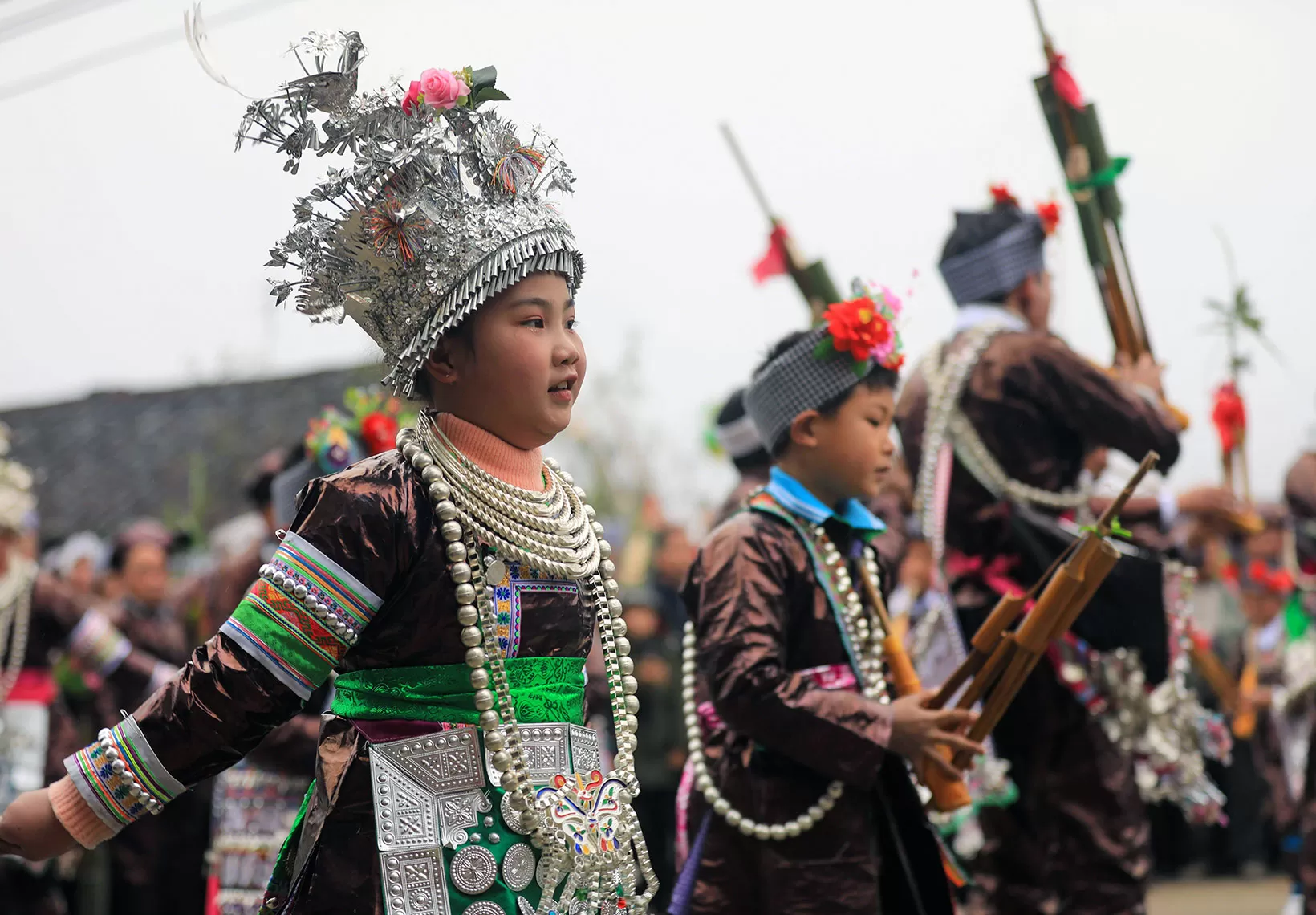The Culture of Guizhou
Guizhou Province, abbreviated as "Qian" or "Gui", is situated in the eastern part of the southwestern region of China. It borders Hunan to the east, Guangxi to the south, Yunnan to the west, and Sichuan and Chongqing to the north. Located in the heart of China's southwestern inland, Guizhou's terrain is higher in the west and slopes downwards to the east, north, and south from the central region.
Guizhou serves as a crucial transportation hub in southwestern China and is an integral part of the Yangtze River Economic Belt. Additionally, it is renowned worldwide as a premier mountain tourism destination.
Brief History
During the Warring States period, the Yelang people established the Slavery State of Yelang, which ruled over the Guizhou area.
In the Qin Dynasty and the early Western Han Dynasty, the central government set up prefectures and counties within the territory of Yelang, marking the beginning of an era that Guizhou
was joint governance by the central dynasties and Yelang.
During the mid to late Western Han and the Eastern Han periods, Guizhou was under the jurisdiction of Kejun Prefecture.
In the Tang Dynasty, the policy of Jimi (a prefecture established by the imperial court in a remote minority area) administration was implemented in the Guizhou region, and the Tusi (native chieftain) system began to emerge, with notable Tusi regimes like the Tian family in Sizhou Prefecture and the Yang family in Bozhou Prefecture.
In 1119 during the Song Dynasty, the court granted Tian Yougong, the native leader of Sizhou Prefecture, the title of Guizhou Defense Commissioner, marking the first use of Guizhou as an administrative name. During the Yuan Dynasty, the Tusi system was widely practiced in Guizhou, with notable Tusi such as the Song family in Shuidong Area and the An family in Shuixi Area.
In 1413 during the Ming Dynasty, the Guizhou Provincial Office was established, formally making Guizhou a provincial-level administrative unit.
By 1727 during the Qing Dynasty, the administrative divisions of Guizhou were essentially finalized and have largely continued to the present day.
On December 26, 1949, the Guizhou Provincial People's Government was established.
National Culture
 Guizhou National Minority
Guizhou National MinorityGuizhou is a region with a diverse ethnic population, home to 56 different ethnic groups including the Miao, Dong, Bouyei, Tujia, and Yi, among others. Over the course of history, these ethnic groups have developed their own unique cultures. For instance, Miao embroidery, Dong drum towers, and Bouyei Eight-Instrument Seated Singing are all cultural treasures of Guizhou. Additionally, Guizhou's folk arts, such as Qian opera and Huadeng(Festival Lantern) opera, also hold significant artistic value.
Miao Ethnic Groupe
The Miao people are the largest ethnic minority in Guizhou Province, renowned for their unique clothing and handicrafts, which are rich in cultural connotations and distinctive artistic styles. Miao attire typically consists of headpieces, tops, skirts, and pants, each featuring unique designs and craftsmanship. These garments are often adorned with embroidered patterns of dragons, phoenixes, flowers, and birds, vividly showcasing the cultural significance of Miao attire. In addition to their intricate clothing, the Miao people also have vibrant cultural traditions such as the Lusheng Festival, bullfighting culture, and mountain song culture.
Dong Ethnic Group
During the Spring Festival, a popular activity known as "Dong’s New Year" (also called the Lusheng Meeting) takes place, involving mutual exchanges and socializing between two Dong villages. This event features a variety of entertaining activities such as Lusheng dancing, communal meals, and singing duels. During Spring Festival, the Dong villages celebrate the New Year with the Kam Grand Choirs. One of the main entertainments during the New Year period is watching Dong opera, which performances begin in the morning and continue until after the New Year's Eve dinner.
Bouyei Ethnic Group
In Guizhou's Qiannan and Qianxinan Prefectures, the Bouyei people often live in close-knit communities consisting of dozens or even hundreds of households. These villages are typically nestled against mountains and situated near water, with fields stretching out in front. A performance during the Spring Festival in Bouyei villages is the "Bayin Zuo Chang" (Eight-Instrument Seated Singing), which has been listed as a national intangible cultural heritage project. If you have the opportunity, be sure to listen to this unique and melodious expression of Buyi culture.
Tujia Ethnic Group
The Tujia people are renowned for their distinctive dances and mountain songs, which are prominently featured during celebrations of harvests, weddings, and other significant occasions. The most important festival for the Tujia is "Gan Nian", also known as "Suoyi(Coir raincoat) Nian". This festival is celebrated one day earlier than the traditional Chinese New Year, hence the name "Gan Nian", which means "rushed New Year". During this time, every household engages in various festive activities such as slaughtering pigs for the New Year feast, making green bean noodles, and brewing rice wine.
Diet Style
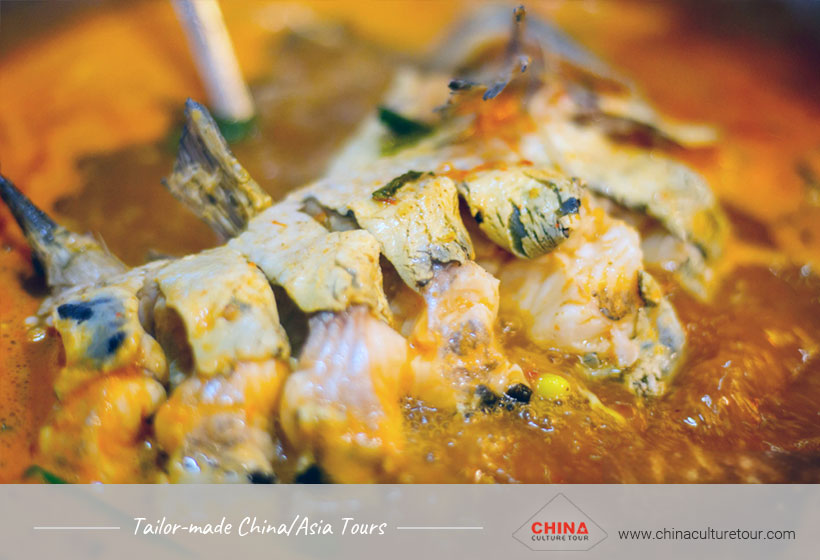 Sour Soup Fish
Sour Soup FishGuizhou's cuisine is characterized by its sour, fresh, spicy, and rich flavors. Historically, due to the scarcity of salt, the local ethnic minorities used sour foods to supplement their diet. Representative dishes include sour soup fish, chicken with chili, sour and spicy fern root noodles, and crispy fish with fermented chili.
Guizhou is located on the mysterious Yunnan-Guizhou Plateau, where the mountains are rich in medicinal herbs, wild edible plants, and small wild animals, which abundance contributes to a diverse and unique culinary culture that leverages the natural bounty of the highlands.
The primary difference between Guizhou cuisine (Qian cuisine) and Sichuan cuisine lies in the variety of ingredients. While both use chili peppers, Guizhou cuisine is known for its milder spiciness and more aromatic and flavorful dishes. Guizhou people prefer using spices like elsholtzia cyprianii and mint, and every dish comes with its own special dipping sauce, enhancing the flavor profile. This culinary approach highlights the rich local traditions and cultural heritage of the region.
Cultural Heritage
Guizhou is a province rich in cultural heritage, boasting a diverse range of intangible cultural assets, including: Miao Brocade and Miao Silver Ornament, showcasing the unique charm of Miao culture; Kam Grand Choirs, listed in Representative List of the Intangible Cultural Heritage of Humanity; Anshun Di Opera, known as "the living fossil of drama", spanning over 600-year history.
In addition to its intangible heritage, Guizhou is home to numerous tangible cultural assets: Hailongtun Tusi Sites, the only World Cultural Heritage site in Guizhou; Chishui Danxia, part of the "China Danxia" landform, listed as a World Heritage Site. Libo Karst, Tongren Mount Fanjing, Shibing Yuntai Mountain showcasing Guizhou's unique geological features and rich biodiversity. These cultural heritages collectively form Guizhou's vibrant cultural landscape, highlighting the province's profound historical depth and cultural diversity.
Customize Your Unique Guizhou Tour

If you are interested in planning a private Guizhou tour, please contact us, and we will be happy to customize it and provide a quote tailored to your preferences.
Alternatively, if you would like to customize your Guizhou Tour, please visit our Guizhou Tour Customized Center. We assure you that you will receive a reply within 24 working hours.
Informative Articles for Your Guizhou Trip
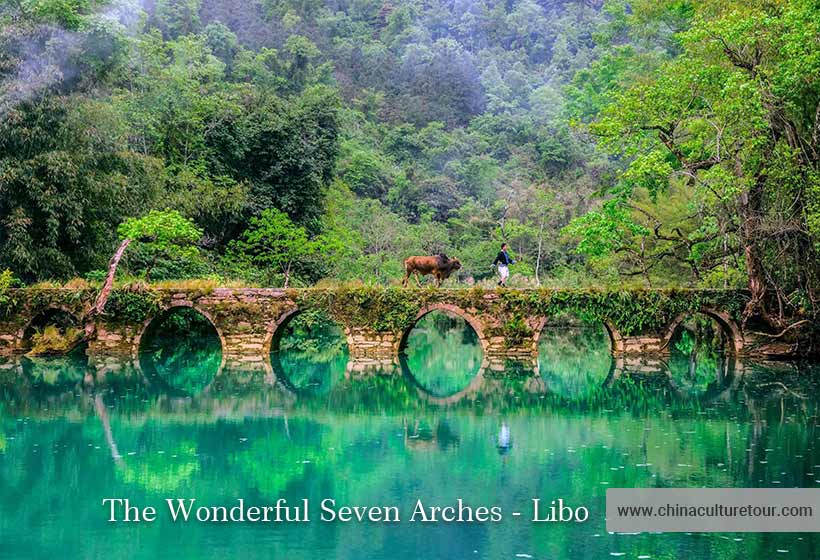 Seven Arches in Libo, Guizhou
Seven Arches in Libo, Guizhou- Guizhou Travel Guide: the best time to go, what to do, what to eat, etc.
- Travel itineraries: best itineraries for your reference
- Weather: the best time and seasons to visit Guizhou
- Attractions: what to visit
- Places: the best place to go in Guizhou
- Activities: cultural immersions
- Unique perspective: top things to do
- Food: what to eat while traveling in Guizhou
- Hotels: where to stay
- Tours: tailor-made Guizhou Tours for your reference
GREAT FAMILY CHINA TOUR
JULY 2024 We wanted to thank Grace at China Culture tour for organizing a great tour of China. We enjoyed our Beijing - Xian-Chengdu -Guilin -Yangshuo - Shanghai trip. Our local guides Bruce in Beijing, Susan in Xian, Jane in Chengdu, Mike in Guilin and Mary in Shanghai took care of us…read more details »
Teng Han L from SINGAPORE
Ready to Create a Unique Dream Travel?
